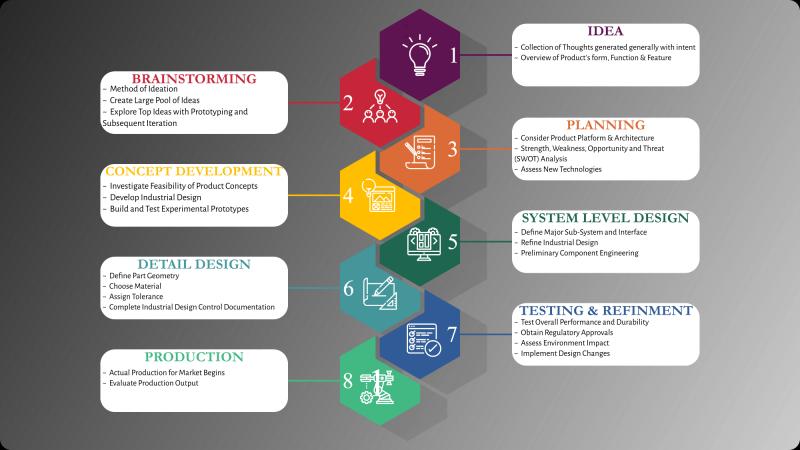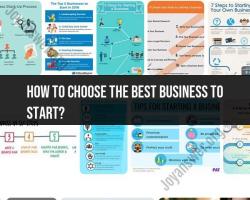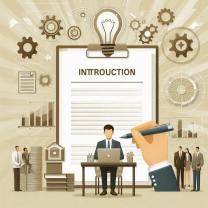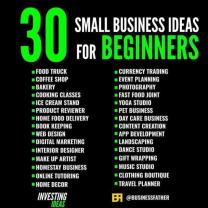How to create the perfect product development process?
Creating an ideal product development process involves several key steps and considerations. Here's a structured approach:
Idea Generation and Validation:
- Gather ideas from various sources: market research, customer feedback, team brainstorming, etc.
- Validate these ideas through market analysis, feasibility studies, and prototype testing.
Market Research and Analysis:
- Understand the target market, customer needs, and existing competition.
- Conduct thorough market research to identify trends, gaps, and opportunities.
Concept Development and Planning:
- Develop a clear product concept based on validated ideas and market research.
- Create a comprehensive plan outlining goals, timelines, resources needed, and potential risks.
Design and Prototyping:
- Design the product, considering functionality, user experience, aesthetics, and manufacturability.
- Develop prototypes for testing and iteration, ensuring the product meets user needs.
Testing and Iteration:
- Conduct rigorous testing, both internally and with target users, to gather feedback.
- Iterate based on feedback to refine the product, addressing any flaws or areas for improvement.
Regulatory Compliance and Certification:
- Ensure the product complies with relevant regulations and standards.
- Obtain necessary certifications and approvals for the product's market readiness.
Manufacturing and Supply Chain Management:
- Set up manufacturing processes, sourcing materials, and establishing supply chains.
- Optimize production efficiency while maintaining quality standards.
Marketing and Launch:
- Develop a comprehensive marketing strategy, including branding, positioning, and pricing.
- Plan a successful launch, considering promotional activities, sales channels, and distribution.
Post-launch Evaluation and Improvement:
- Monitor product performance, gather user feedback, and analyze market response post-launch.
- Implement continuous improvements based on real-world usage and evolving market needs.
Cross-functional Collaboration and Communication:
- Foster collaboration between different teams (design, engineering, marketing, etc.) throughout the process.
- Maintain open communication channels to ensure everyone is aligned and informed.
Agile and Adaptive Approach:
- Embrace flexibility and adaptability to adjust to changing market conditions or unexpected challenges.
- Utilize agile methodologies to iterate quickly and efficiently during development.
Remember, there's no one-size-fits-all perfect product development process. Tailor these steps to your specific industry, product type, and company culture while continuously seeking feedback and improvement to refine the process over time. Flexibility, adaptability, and a customer-centric approach are key components of successful product development.
What steps are essential in crafting an optimal product development procedure?
Crafting an optimal product development procedure involves several key steps, which can be summarized into the following stages:
1. Ideation and Strategy:
- Identify customer needs and pain points: Conduct thorough market research and user testing to identify unmet needs and opportunities for new products.
- Generate ideas: Brainstorm and refine innovative ideas that address identified needs and leverage market trends.
- Develop a product vision and strategy: Define the product's core value proposition, target audience, and overall strategic goals.
2. Design and Development:
- Develop product specifications and requirements: Define the functional and technical specifications of the product, ensuring it meets user needs and market standards.
- Design and prototype: Create prototypes to visualize and test the product concept, gathering feedback for iterative improvement.
- Develop and test the product: Implement the final design, conduct rigorous testing for functionality, usability, and performance.
3. Commercialization and Launch:
- Develop marketing and sales strategies: Determine pricing, distribution channels, and marketing tactics to reach your target audience and drive sales.
- Prepare for launch: Manage logistics, supply chain, and customer support infrastructure to ensure a smooth product launch.
- Launch and monitor performance: Release the product to the market and closely monitor its performance, gathering feedback and adapting strategies as needed.
4. Continuous Improvement:
- Collect and analyze user feedback: Actively seek feedback from users to identify areas for improvement and enhance the product experience.
- Iterate and update the product: Continuously evolve the product based on user feedback, market trends, and technological advancements.
- Maintain and support the product: Develop a robust customer support system to address user inquiries and resolve issues effectively.
Optimizing the product development procedure:
- Embrace a data-driven approach: Utilize data analytics throughout the process to inform decision-making and validate assumptions.
- Foster a culture of collaboration: Encourage cross-functional collaboration between teams to optimize efficiency and communication.
- Prioritize agility and flexibility: Be prepared to adapt and adjust plans based on market feedback and changing circumstances.
- Invest in continuous learning: Encourage team members to stay updated with industry trends and acquire new skills.
- Utilize relevant tools and technologies: Leverage automation, project management software, and design tools to streamline the process.
By implementing these steps and optimizing the process, companies can significantly enhance their product development success rate and deliver products that resonate with their target audience and achieve market success.












